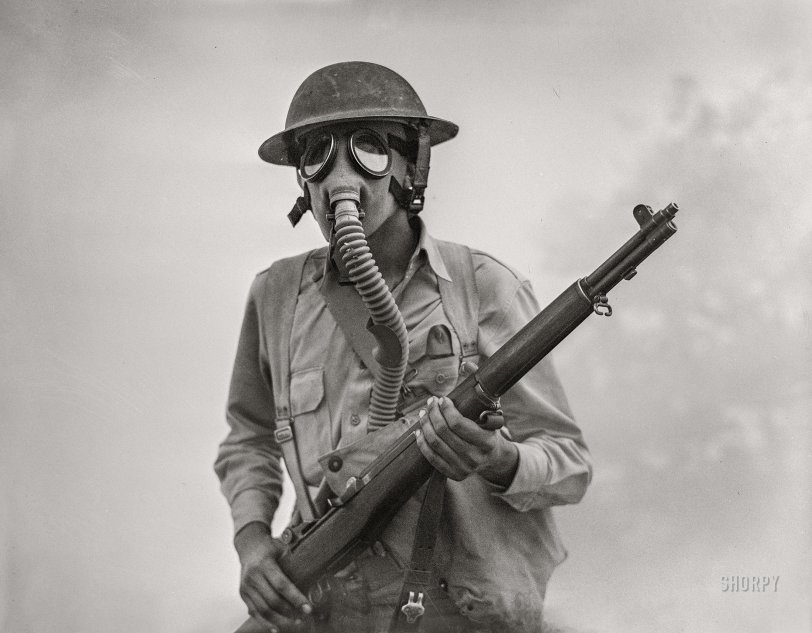


Framed or unframed, desk size to sofa size, printed by us in Arizona and Alabama since 2007. Explore now.
Shorpy is funded by you. Patreon contributors get an ad-free experience.
Learn more.

- Lofty addition
- In 1912
- Keenan Building
- Six years old
- Taken from the P.J. McArdle Roadway?
- It stood only 47 years
- Three track mind
- Incline to the right
- Reach for the sky, 1912 style
- No clean sweep
- Same Job Title, Same Face
- Sadly Lost
- Beautiful ...
- Where you get your kicks
- Aim High
- Pueblo Revival sisters
- Pueblo Neoclassicism
- Milk Man
- Regional dialect.
- Spielberg's inspiration
- Great Photo
- Loaf Story
- Do you still have the Rakes category?
- Could almost be a scene from the 1957 movie 'Hell Drivers'
- The Wages of Fear.
- Conspicuous by their absence
- Got Milk?
- All that aluminum
- No lefties
- Smoke 'em if you've got 'em
Print Emporium
The Fog of War: 1942

April 1942. "Fort Riley, Kansas. Training of Negro units and white units. Soldier of a cavalry rifle unit going through smokescreen during a field problem." Acetate negative by Jack Delano for the U.S. Foreign Information Service/Office of War Information. View full size.
Shades of the Great War
With the doughboy (M1917) helmet and the gas mask.
Taken very seriously
Poison gas killed an estimated 91,000 people during World War I, so there was plenty of reason to fear and train for it in World War II. Despite the rare humorous poster below, this was no laughing matter.
In 1925, the League of Nations adopted the Geneva Protocol, which banned the use of chemical or biological agents in warfare--but it did not prohibit further development or stockpiling of them. During World War II, the battlefield prohibition mostly held--but there were the Nazi concentration camps.
During a basic training exercise in 1970, I had to walk around a room full of tear gas, then remove my mask some time before being let out. This was to show that masks worked, and that gas worked if you weren't wearing one. But the war we were pointing toward featured napalm and Agent Orange, for which gas masks provided poor protection.

























On Shorpy:
Today’s Top 5